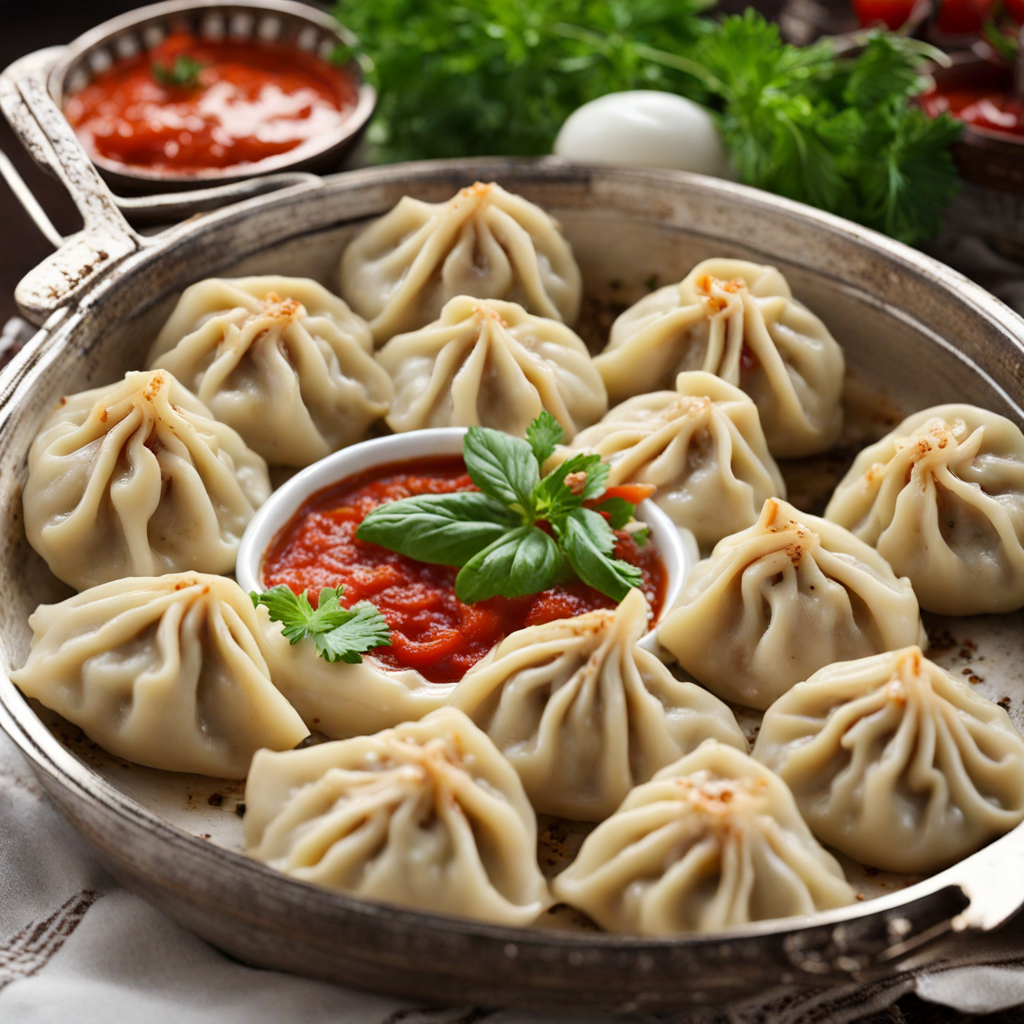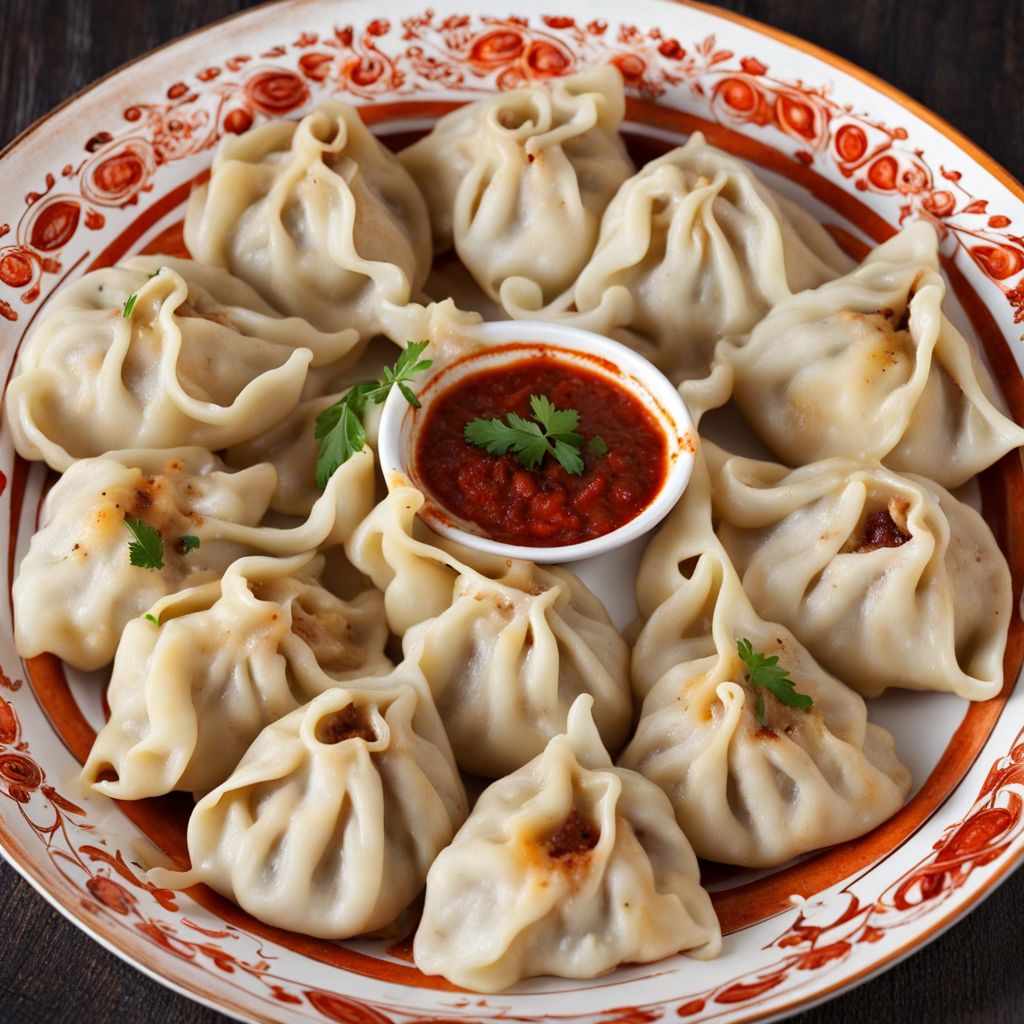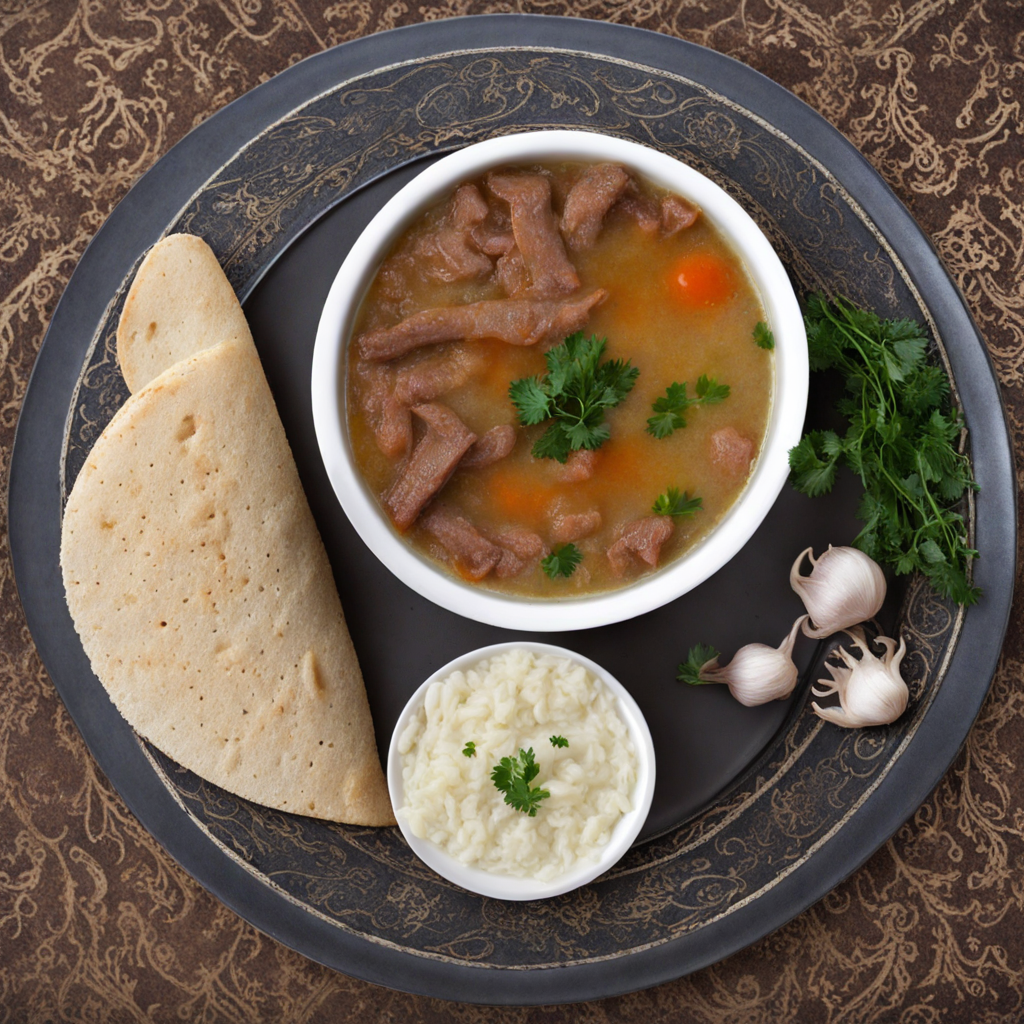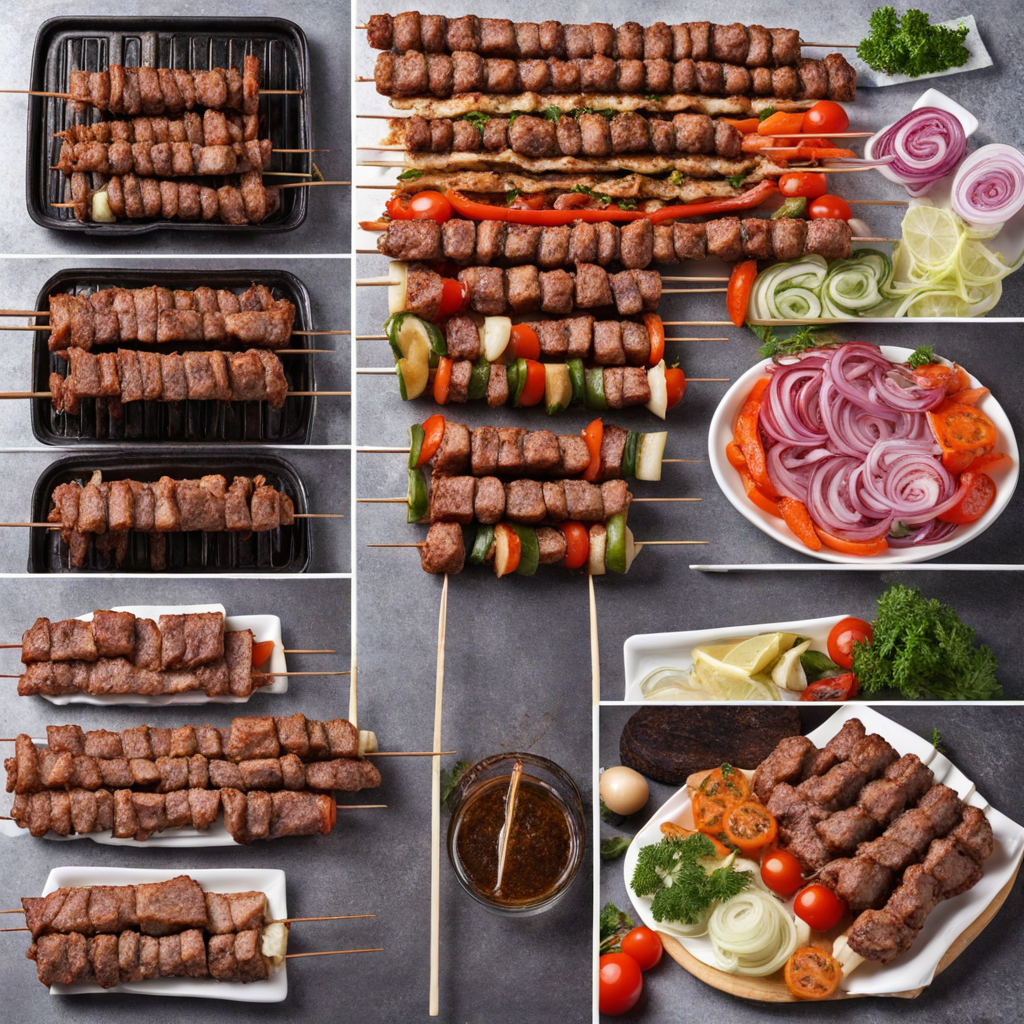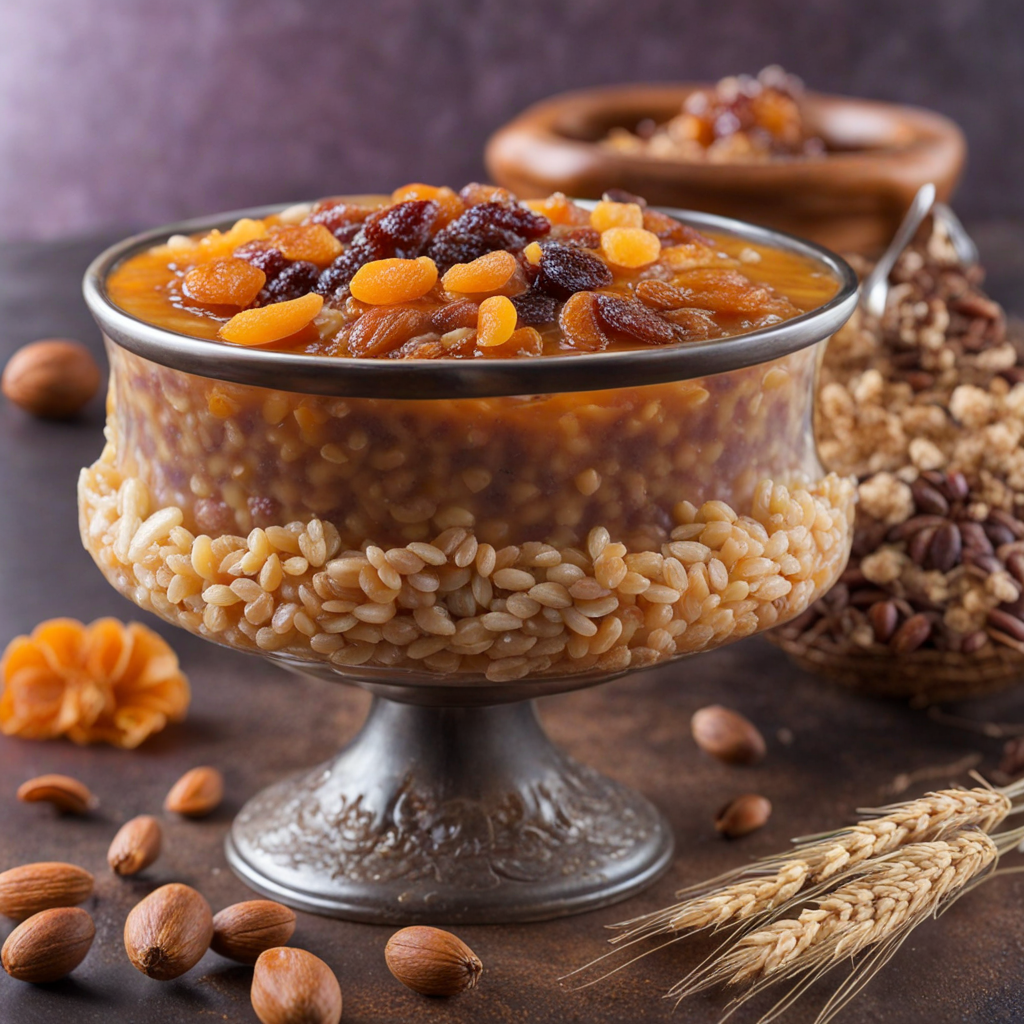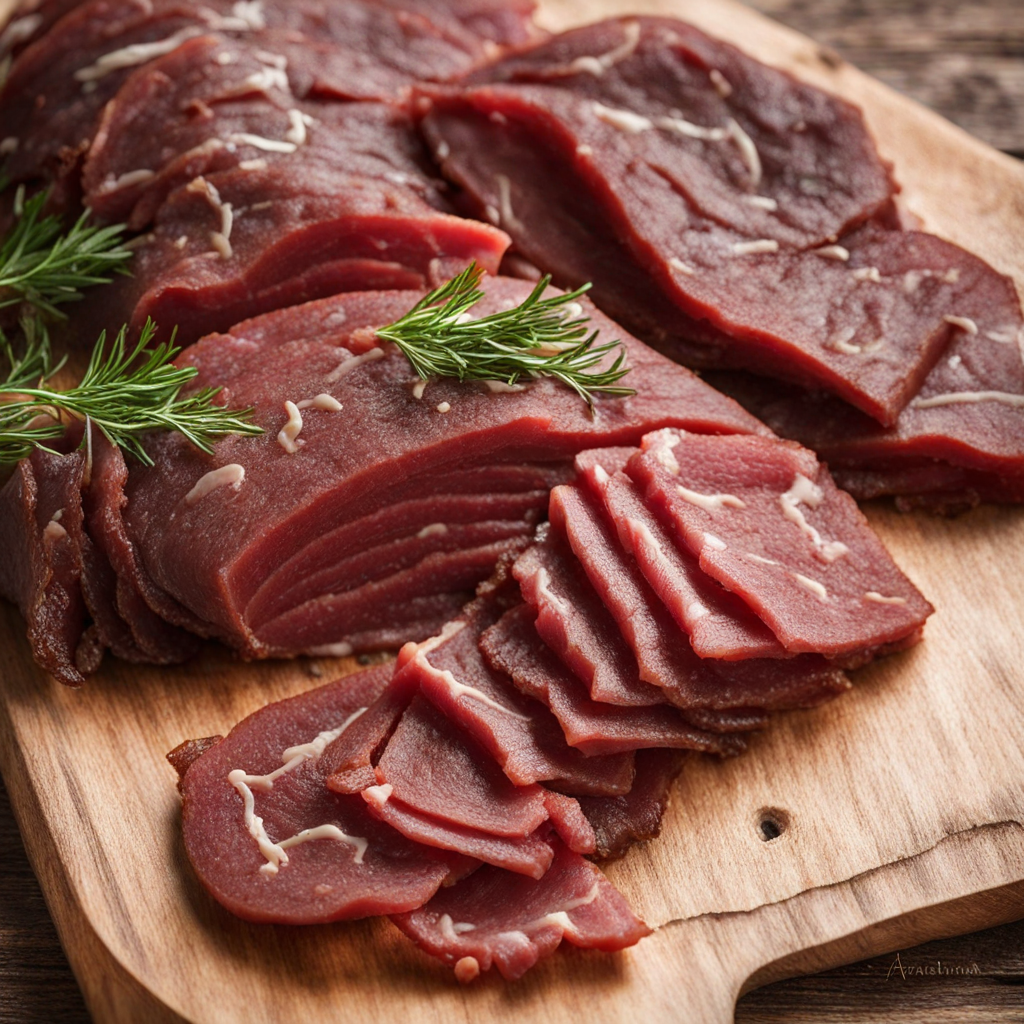Manti
Manti is a delightful Armenian dish that showcases the rich culinary traditions of the region. These small, dumpling-like pockets are typically filled with minced meat, often lamb or beef, seasoned with a blend of traditional spices like cumin, paprika, and black pepper. The dough is rolled out thinly, cut into squares, and expertly folded around the savory filling, creating a perfect little package that retains all the flavors within. The craftsmanship involved in shaping the manti is a testament to the skill and care that goes into Armenian cooking, making each bite a celebration of texture and taste. Once filled and shaped, manti is usually steamed or baked until golden brown, which enhances the flavors and provides a delightful contrast between the tender dumpling exterior and the juicy filling. Often served with a generous drizzle of garlic yogurt sauce or a rich tomato sauce, manti becomes a wonderful harmony of flavors and textures. The creamy tang of the yogurt complements the savory meat, while the tomato sauce adds a touch of sweetness and acidity, elevating the dish to new gastronomic heights. Manti is not just a meal; it's an experience that brings together family and friends, often enjoyed during special occasions and gatherings. Each region may have its own variations, with different fillings or spices, allowing for a unique tasting experience with every bite. For those looking to explore a new taste, manti offers a warm, comforting, and richly flavored dish that encapsulates the heart of Armenian cuisine, inviting you to savor its delightful layers and cultural significance.
How It Became This Dish
Origins of Manti Manti, a cherished dish in Armenian cuisine, boasts a rich history that can be traced back to the nomadic roots of the Armenian people. The word "manti" itself is believed to have Turkic origins, although its exact etymology remains a subject of debate among food historians. This dumpling dish is thought to have been influenced by various Central Asian culinary traditions, particularly those of the Mongols and Turkic tribes, who introduced the concept of filled dumplings. As these tribes migrated and settled in different regions, they adapted their culinary practices, leading to the creation of unique variations of manti across different cultures. In Armenia, manti is traditionally made with a thin dough that is filled with minced meat, often lamb or beef, mixed with onions and spices. This dish is typically shaped into small, boat-like forms, which allows for even cooking and a delightful texture. The Armenians developed their own distinctive version of manti, which has become an integral part of their culinary identity. The dish is often baked, steamed, or boiled, with regional variations influencing the cooking method and flavor profile. \n Cultural Significance Manti holds a special place in Armenian culture, symbolizing hospitality and the warmth of family gatherings. It is a dish often prepared for special occasions and celebrations, such as weddings, holidays, and family reunions. The act of making manti can be a communal event, where family members come together to roll out the dough, fill the dumplings, and share stories. This communal aspect of preparation fosters a sense of togetherness and strengthens familial bonds, making manti not just a meal, but a cultural experience. In Armenian households, the preparation of manti can also carry a sense of nostalgia, with recipes being passed down through generations. Each family may have its own secret spice blend or technique for creating the perfect manti, allowing for a rich tapestry of flavors and traditions within the Armenian diaspora. During major holidays such as Christmas and Easter, manti is often served alongside other traditional dishes, showcasing its versatility and importance in Armenian culinary customs. \n Regional Variations As manti spread beyond Armenia, it underwent various transformations, leading to regional adaptations that reflect local tastes and ingredients. In Turkey, for instance, manti is a popular dish known for its smaller size and is often served topped with yogurt and garlic, drizzled with melted butter infused with paprika. This variation highlights the influence of Turkish cuisine on manti and demonstrates how the dish has evolved to incorporate local flavors. In contrast, in the Middle Eastern regions, such as Lebanon and Syria, manti may be prepared in a different manner, perhaps served in a broth or with a rich sauce. The choice of spices and fillings may also differ, showcasing the diverse culinary influences that have shaped the dish over centuries. These adaptations illustrate the dynamic nature of food culture, as dishes like manti travel and assimilate into new culinary landscapes while maintaining their core identity. \n Modern-Day Manti In contemporary Armenia, manti continues to thrive as a popular dish, often appearing on restaurant menus and at social gatherings. With the rise of globalization, the dish has gained international recognition, prompting chefs and home cooks alike to experiment with new ingredients and cooking methods. Some modern interpretations of manti may include vegetarian options, utilizing ingredients such as mushrooms, spinach, or lentils, thereby catering to a broader audience that values dietary diversity. Additionally, the advent of culinary tourism has further popularized manti among visitors to Armenia. Food enthusiasts are eager to experience authentic Armenian cuisine, and manti, with its intricate preparation process and rich flavors, serves as a perfect introduction to the country's culinary heritage. Cooking classes and food tours often feature manti-making sessions, allowing tourists to engage with local traditions and learn about the cultural significance of this beloved dish. \n Health and Nutrition While manti is frequently enjoyed as a hearty meal, it also offers a nutritious profile, particularly when made with whole ingredients. The dumplings can be filled with various meats, providing a good source of protein, while the addition of vegetables and spices contributes essential vitamins and minerals. Additionally, the use of whole wheat flour for the dough can enhance the nutritional value, making manti a more wholesome option. However, like many traditional dishes, manti can be high in calories and fat depending on the cooking method and fillings used. Traditional recipes often include generous amounts of butter or oil, especially when served with rich sauces. As health-conscious eating habits gain popularity, many cooks are modifying traditional recipes to reduce fat and calories, while still preserving the essence of the dish. This adaptability ensures that manti remains relevant in a modern dietary landscape that increasingly values health and wellness. \n Conclusion: A Culinary Legacy The journey of manti from its nomadic origins to its place at the heart of Armenian cuisine reflects the broader narrative of cultural exchange and adaptation that characterizes food history. Manti is more than just a dumpling; it is a testament to the rich tapestry of Armenian heritage and the enduring connections that food creates among people. Whether enjoyed at a festive gathering or as a simple family meal, manti embodies the essence of Armenian hospitality and the joy of shared culinary experiences. As the world continues to embrace diverse culinary traditions, manti stands as a proud representative of Armenian culture, inviting all who encounter it to savor its flavors and appreciate its storied history.
You may like
Discover local flavors from Armenia


